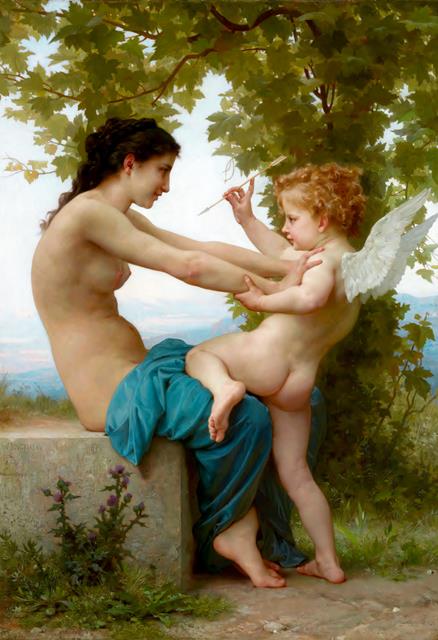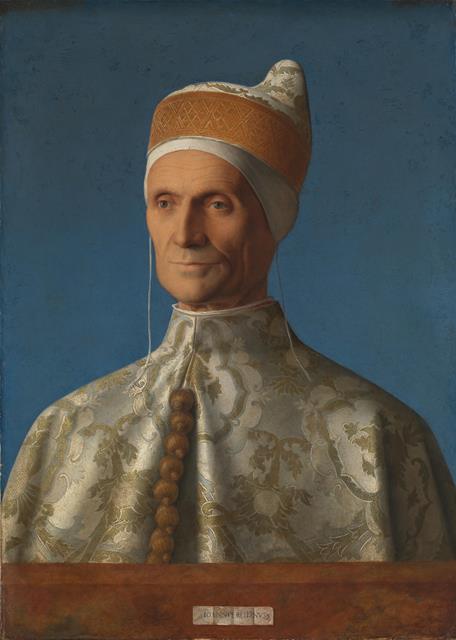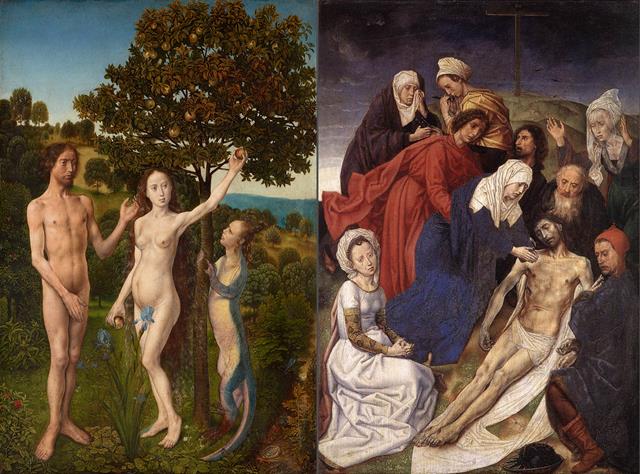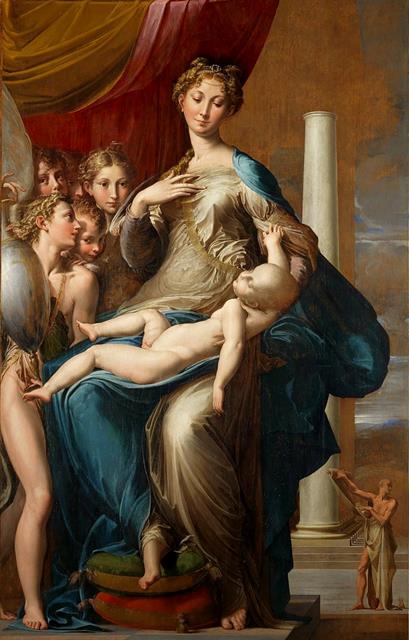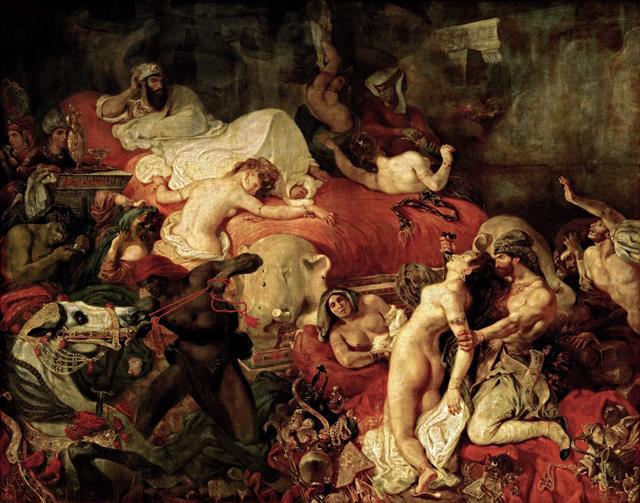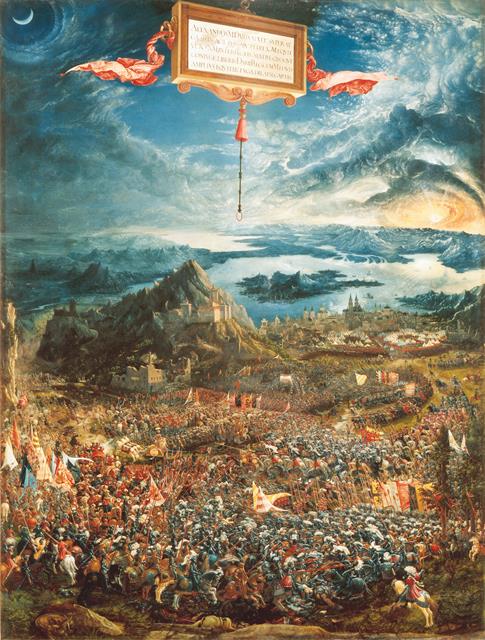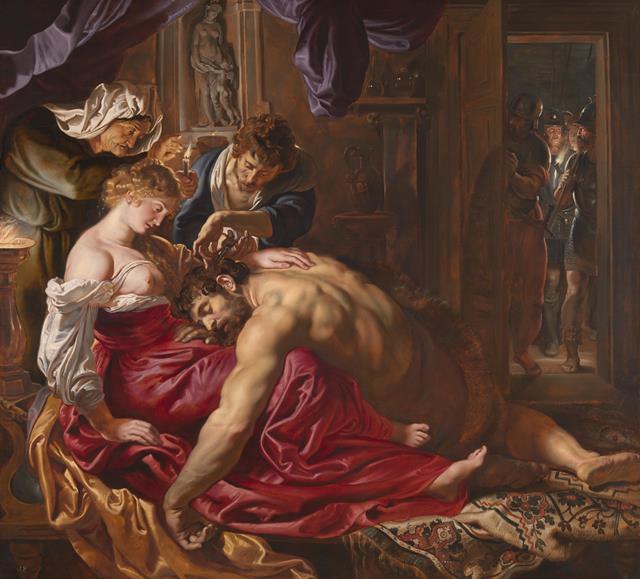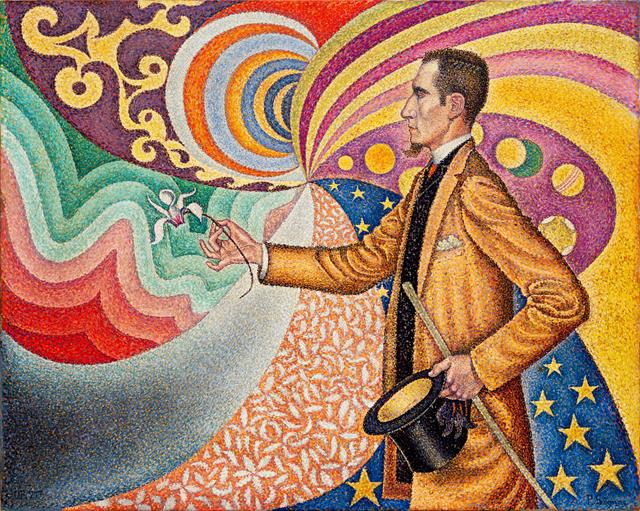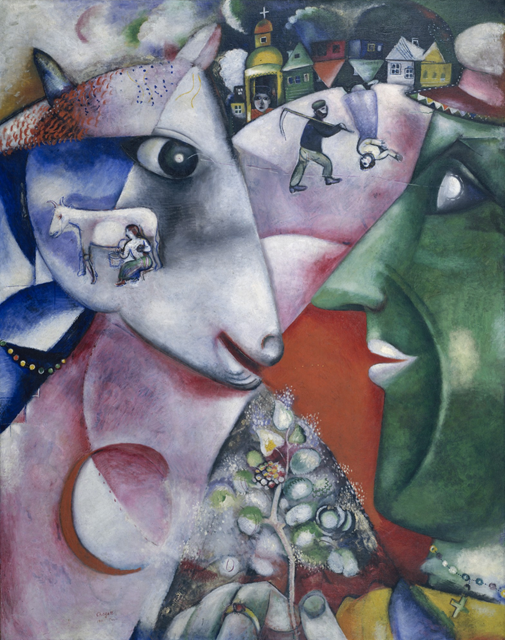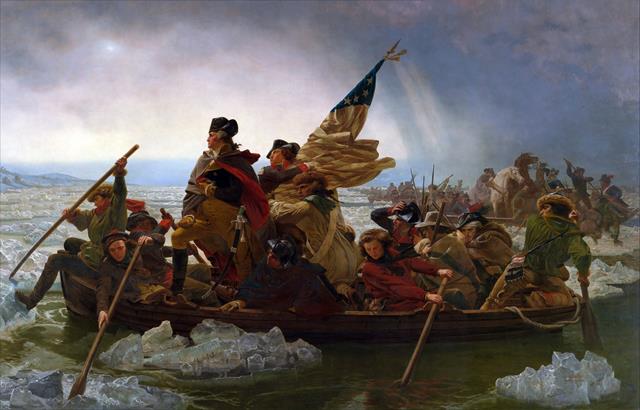Discover the Finest Artworks: Top 200 Paintings Worldwide (#174–150)
Explore our meticulously researched compilation showcasing the 200 greatest paintings globally. Each painting is accompanied by comprehensive details, including size, location, materials used, its frequency in experts' lists, and our own rating.
Table of Contents
ToggleCurrently you are exploring #125–101.
Click on the following links to discover #200–176, #175–151, #150–126, #125–101, #100–76, #75–51,#50–25, #24–1 of our list of the 200 best paintings in the world.
Our list is curated through an in-depth analysis of over 20 influential art books in various languages and multiple reputable sources.
Uncover our methodology and the selected art books behind this definitive top 200 list by clicking here.
#125 | Pablo Picasso, “Boy with a Pipe”
This Painting Exemplifies Picasso’s Genius in Distilling Complex Emotions into Deceptively Simple Forms
"Boy with a Pipe" was created by Picasso in 1905 during his "Rose Period," characterized by warmer hues and a focus on themes of youth and innocence.
Through the use of warm, earthy tones and dynamic brushwork, Picasso captures the essence of the boy's youthfulness while infusing the scene with a sense of quiet introspection.
"Boy with a Pipe" exemplifies the artist's departure from traditional modes of representation towards a more subjective and emotionally resonant style, laying the groundwork for the revolutionary innovations that would define his later career.
💡 The painting originally belonged to the collection of John Hay Whitney before being sold at auction in 2004 for a record-breaking price of $104 million, making it one of the most expensive paintings ever sold at the time.
Date: 1905
Dimensions: 100 cm × 81.3 cm (39.4 in × 32.0 in) | large
Material: Oil on canvas
Collection: Private Collection
Art Movement: Post-Impressionism/Picasso's Rose Period, Spanish 🇪🇸
Experts’ Choice: 5x
Our Score: 5.80
#124 | William-Adolphe Bouguereau, "Young Girl Defending Herself Against Eros"
Uncover the captivating story of love and resistance depicted in this timeless artwork
The essence of "Young Girl Defending Herself Against Eros" lies in its portrayal of the eternal struggle between innocence and desire, virtue and temptation.
It is serving as a testament to the artist's profound ability to evoke emotions and intellectual engagement through the language of abstraction.
The composition's balance and harmony, achieved through careful arrangement of forms and colors, contribute to its aesthetic appeal and visual impact.
Date: 1880
Dimensions: 81.6 x 57.8 cm (32.1 in × 79.3 in) | medium-sized
Material: Oil on canvas
Collection: J. Paul Getty Museum, Los Angeles, Paris 🇺🇸
Art Movement: Realism, French 🇫🇷
Experts’ Choice: 7x
Our Score: 5.80
#123 | Francesco Hayez, "The Kiss"
Evokes the Intensity of Love’s Embrace
The painting captures a moment of intense passion between two lovers, conveying the depth of their emotions through subtle gestures and expressions.
Hayez's skillful composition draws the viewer into the scene, evoking a sense of empathy and connection with the subjects.
Set against a dark background, the figures emerge illuminated by a soft, ethereal light, heightening the drama of the scene.
Date: 1859
Dimensions: 110 cm × 88 cm (43 in × 35 in) | large
Material: Oil on canvas
Collection: Pinacoteca di Brera, Milan 🇮🇹
Art Movement: Romanticism, Italian 🇮🇹
Experts’ Choice: 7x
Our Score: 5.80
#122 | Diego Velázquez, "Rokeby Venus"
Challenges Norms with Provocative Beauty
The painting exudes an aura of sensuality and intimacy, inviting viewers to contemplate themes of beauty, desire, and the power dynamics inherent in the act of looking.
The mirror held by Venus reflects the image of her back, a technical feat that showcases Velázquez's skill and attention to detail."
💡 The Rokeby Venus is the only surviving female nude by Velázquez.
Date: 1647
Dimensions: 122 cm × 177 cm (48 in × 70 in) | large
Material: Oil on canvas
Collection: National Gallery, London 🇬🇧
Art Movement: Baroque, Spanish 🇪🇸
Experts’ Choice: 8x
Our Score: 5.80
#121 | Caravaggio, "Bachus"
A Revolutionary Approach to Classical Themes
"Bacchus" was painted by Caravaggio circa 1595 when he was in his early twenties, showcasing his remarkable talent at a young age.
Bacchus" was controversial in its time for its naturalistic portrayal of the god, deviating from the idealized depictions common in Renaissance art, yet it ultimately contributed to Caravaggio's reputation as a groundbreaking artist.
The bold composition and lifelike depiction of the figure of Bacchus himself, with his intense gaze and relaxed posture, captivate viewers and invite them into the scene
The painting's attention to detail, from the rendering of Bacchus's skin to the carefully arranged still-life elements, demonstrates Caravaggio's technical skill and artistic innovation.
Date: 1598
Dimensions: 95 cm × 85 cm (37 in × 33 in) | large
Material: Oil on canvas
Collection: Galleria degli Uffizi, Florence 🇮🇹
Art Movement: Baroque, Italian 🇮🇹
Experts’ Choice: 8x
Our Score: 5.80
#120 | Paul Cézanne, "The Card Players" (Paris Version)
A Revolutionary Approach to Form, Composition, and Color
Despite its seemingly simple subject matter, the painting embodies complex themes of human connection, leisure, and the passage of time.
The essence of "The Card Players" lies in its portrayal of a quiet moment of human interaction amidst a game of cards.
The painting exists in multiple versions, with the Paris version being the most famous and celebrated.
Date: 1894–1895
Dimensions: 47.5 cm × 57 cm (18.7 in × 22 in) | medium-sized
Material: Oil on canvas
Collection: Musée d’Orsay, Paris 🇫🇷
Art Movement: Impressionism, French 🇫🇷
Experts’ Choice: 9x
Our Score: 5.80
#119 | Thomas Gainsborough, "The Blue Boy"
Exudes Aristocratic Elegance
Gainsborough's bold use of color, particularly the vibrant blue of the boy's attire, showcases his artistic daring and ability to evoke emotion through pigment alone.
The subject's enigmatic expression adds depth to the painting, inviting interpretation and speculation about his identity and mood.
Despite its fame, the identity of the boy in the painting remains a subject of speculation, with various theories suggesting he may have been a member of the aristocracy or a fictional character.
Date: c. 1770
Dimensions: 177.8 cm × 112.1 cm (70.0 in × 44.1 in) | very large
Material: Oil on canvas
Collection: Henry E. Huntington Art Gallery, San Marino (near Los Angeles) 🇺🇸
Art Movement: Rococo, English 🇬🇧
Experts’ Choice: 10x
Our Score: 5.80
#118 | Jan van Eyck, "Madonna of Chancellor Rolin"
A Portrait of Devotion and Power
The essence of the painting lies in its portrayal of the Virgin Mary and Chancellor Rolin in a sacred moment of devotion and reverence.
The Virgin, holding the infant Christ, gazes benevolently at Rolin, her expression conveying a sense of maternal warmth and divine grace.
Additionally, scholars have noted the deliberate placement of objects within the scene, each carrying specific religious or allegorical significance, contributing to the overall narrative richness of the artwork.
Date: c. 1435
Dimensions: 66 cm x 62 cm (25.9 x 24.4 in) | medium-sized
Material: Oil on oak wood
Collection: Musée du Louvre, Paris 🇫🇷
Art Movement: Northern Renaissance, Flemish 🇧🇪
Experts’ Choice: 10x
Our Score: 5.80
#117 | Henry Fuseli, "The Nightmare" (Detroit Version)
A Haunting Exploration of the Human Condition, Offering a Glimpse into the Subconscious Depths of the Mind
Fuseli skillfully combines elements of horror, fantasy, and psychology to create a deeply unsettling yet fascinating composition.
The juxtaposition of the demonic incubus and the vulnerable sleeping woman generates a sense of dread and fascination that continues to resonate with audiences today.
The painting delves into themes of fear, desire, and the unknown, inviting viewers to confront their own inner demons and anxieties. Fuseli's use of chiaroscuro heightens the drama of the scene, casting deep shadows that obscure the boundaries between reality and fantasy.
Date: 1781
Dimensions: 101.6 cm × 127 cm (40.0 in × 50 in) | large
Material: Oil on canvas
Collection: Detroit Institute of Arts, Detroit 🇺🇸
Art Movement: Romanticism, Swiss 🇨🇭
Experts’ Choice: 11x
Our Score: 5.80
#116 | Giovanni Bellini, "The Doge Leonardo Loredan"
Evokes the Majesty of Venetian Leadership
The essence of "The Doge Leonardo Loredan" lies in its portrayal of authority, leadership, and the historical significance of Venice during the Renaissance.
The painting captures the essence of Doge Leonardo Loredan, the leader of the Venetian Republic, depicting him with a sense of dignity and power.
Loredan's gaze pierces through time, commanding respect and admiration.
Date: c. 1501–02
Dimensions: 61.6 cm × 45.1 cm (24.3 in × 17.8 in) | small
Material: Oil on poplar panel
Collection: National Gallery London 🇬🇧
Art Movement: Early Renaissance, Venetian School 🇮🇹
Experts’ Choice: 12x
Our Score: 5.80
#115 | Paolo Veronese, “The Wedding at Cana”
A Sumptuous Portrayal of a Biblical Miracle Infused with the Opulence of Renaissance Venice
Set against a monumental architectural backdrop, the painting captures the moment when Christ transforms water into wine during a lavish wedding feast.
The sheer scale and complexity of the painting, covering an entire wall of the refectory, demonstrates Veronese's technical prowess and command over monumental compositions.
Observant viewers may notice the inclusion of contemporary figures, such as members of the Venetian elite, among the biblical guests.
Date: 1562–63
Dimensions: 660 x 990 cm (267 in × 391 in) | extremely large
Material: Oil on canvas
Collection: Musée du Louvre, Paris 🇫🇷
Art Movement: Renaissance, Venetian School 🇮🇹
Experts’ Choice: 12x
Our Score: 5.80
#114 | Hugo van der Goes, "The Fall and Redemption of Man" (Dyptich)
A Testament to Van Der Goes’ Artistic Genius and Theological Depth
This famous diptych was likely commissioned for private devotional use, reflecting the era's growing emphasis on personal piety.
Its innovative layout, with scenes of the Fall of Man and the Redemption of Christ juxtaposed, creates a powerful visual dialogue that resonates with its viewers across centuries.
The painting draws inspiration from classical mythology, depicting the tragic story of Procris, a nymph accidentally killed by her husband, Cephalus, during a hunting incident.
Date: after 1479
Dimensions: 65.4 x 184.2 cm (12.67 x 8.62 in) | very large
Material: Oil on wood
Collection: Kunsthistorisches Museum, Vienna 🇦🇹
Art Movement: Early Netherlandish Renaissance 🇳🇱
Experts’ Choice: 13x
Our Score: 5.80
#113 | Parmigianino, "Madonna and Child with Angels" (Madonna with the Long Neck)
Exploration of Grace and Elegance through Elongated Figures
Parmigianino's "Madonna and Child with Angels" (commonly known as "Madonna with the Long Neck") is considered a masterpiece of painting due to its innovative composition, graceful figures, and enigmatic atmosphere.
The painting is renowned for its departure from traditional depictions of the Madonna and Child, featuring elongated proportions, a languid posture, and a surreal landscape populated by ethereal figures.
Date: 1534–1540
Dimensions: 216 cm × 132 cm (85 in × 52 in) | very large
Material: Oil on panel
Collection: Galleria degli Uffizi, Florence 🇮🇹
Art Movement: Mannerism, Italian 🇮🇹
Experts’ Choice: 14x
Our Score: 5.58
#112 | Ferdinand Victor Eugène Delacroix, "The Death of Sardanapalus" (Louvre Version)
Evoking a Sense of Tragic Decadence and Excess
Delacroix's painting conveys a sense of decadence and excess, with the king surrounded by opulent fabrics, treasures, and women in various states of distress.
It depicts the Assyrian king Sardanapalus, in an act of decadence and despair, ordering the destruction of his palace, concubines, and wealth as he faces imminent defeat.
The composition is dynamic, drawing the viewer's eye to the central figure of Sardanapalus amidst chaos and destruction.
Date: 1872–73
Dimensions: 392 cm × 496 cm (29 × 36 7/16 in) | extremely large
Material: Oil on canvas
Collection: Musée du Louvre, Paris 🇫🇷
Art Movement: Romanticism, French 🇫🇷
Experts’ Choice: 14x
Our Score: 5.80
#111 | Edgar Degas, "L'Absinthe (in a Cafe)"
Evokes the Loneliness of Modern Life
The painting captures a moment of contemplation and introspection, reflecting the psychological complexities of modern life.
Additionally, the painting's subject matter, depicting a woman and a man lost in their own thoughts in a Parisian café, speaks to broader themes of isolation and disconnection in the rapidly changing urban landscape of the time.
Degas' meticulous attention to detail and his ability to evoke a sense of melancholy through subtle gestures and expressions elevate the painting to masterpiece status.
Date: 1875–1876
Dimensions: 92 cm × 68 cm (36.2 in × 26.8 in) | medium-sized
Material: Oil on canvas
Collection: Musée d'Orsay, Paris 🇫🇷
Art Movement: Impressionism, French 🇫🇷
Experts’ Choice: 14x
Our Score: 5.80
#110 | Albrecht Altdorfer, "The Battle of Alexander at Issus"
The Revolutionary Role of Landscape in Art
The Battle of Alexander at Issus" is celebrated for its historical accuracy blended with artistic interpretation, reflecting the Renaissance fascination with classical themes.
The painting showcases Altdorfer's interest in merging realism with symbolic elements, such as the towering mountains and expansive sky that frame the battlefield.
It's noted for its use of color and light, particularly how Altdorfer manipulates these elements to convey mood and drama.
Date: 1529
Dimensions: 158.4 cm × 120.3 cm (62.4 in × 47.4 in) | very large
Material: Oil on panel
Collection: Alte Pinakothek Munich 🇩🇪
Art Movement: Northern Renaissance, German 🇩🇪
Experts’ Choice: 18x
Our Score: 5.80
#109 | Peter Paul Rubens, "Samson and Delilah"
Discover Rubens' Genius in Visual Storytelling
"Samson and Delilah" captures the dramatic moment of betrayal from the biblical story of Samson, a legendary figure known for his incredible strength, and Delilah, a woman who deceives him.
The expressive faces and body language of the characters evoke a range of emotions, from passion to deceit, resonating with viewers on a visceral level.
The painting showcases Rubens' unparalleled skill in capturing the human form in dynamic and emotive poses.
Date: c. 1609–1610
Dimensions: 185 cm × 205 cm (73 in × 81 in) | very large
Material: Oil on wood
Collection: National Gallery, London 🇬🇧
Art Movement: Baroque, Flemish 🇧🇪
Experts’ Choice: 12x
Our Score: 5.90
#108 | Paul Signac, "Portrait of M. Félix Fénéon"
Immortalizes the Prominent Art Patron Félix Fénéon in a Symphony of Dots
Portrait of M. Félix Fénéon" earns its place among the top 200 paintings in the world due to its revolutionary technique known as Pointillism, pioneered by Paul Signac.
This technique involves the meticulous application of small, distinct dots of color that blend together to create a visually striking composition.
Félix Fénéon, the subject of the painting, was a significant figure in the art world during the late 19th and early 20th centuries, known for his advocacy of avant-garde artists such as Signac and Georges Seurat.
Date: 1890
Dimensions: 73.5 × 92.5 cm (28.9 × 36.4 in) | large
Material: Oil on canvas
Collection: Museum of Modern Art (MoMA), New York City 🇺🇸
Art Movement: Pointillism, French 🇫🇷
Experts’ Choice: 5x
Our Score: 5.90
#107 | Marc Chagall, "I and the Village"
Immerse Yourself in the Whimsical and Surreal Landscapes of Chagall’s Imagination
Chagall's use of vibrant colors and dreamlike imagery captures the imagination of viewers, inviting them into a world where reality and fantasy intertwine.
The symbolic motifs, such as the recurring image of the village and the human figures merging with animals, imbue the painting with a sense of mystique and universality.
The painting is heavily influenced by Chagall's childhood experiences growing up in a Russian village, with the imagery reflecting the artist's memories and emotions.
Date: 1911
Dimensions: 192.1 cm × 151.4 cm (75.6 in × 59.6 in) | very large
Material: Oil on canvas
Collection: Museum of Modern Art (MoMA), New York City 🇺🇸
Art Movement: Expressionism/Surrealism, French 🇫🇷
Experts’ Choice: 5x
Our Score: 5.90
#105 | Valentin Serov, "The Girl with Peaches"
Challenging Traditional Notions of Portraiture
The painting was completed in 1887 when Serov was just 23 years old, showcasing his prodigious talent and early recognition as a leading figure in Russian art.
It was commissioned by the wealthy industrialist and patron of the arts, Savva Mamontov, as a portrait of his daughter, Vera.
Serov's decision to depict Vera in a natural, unposed manner was revolutionary at the time, breaking away from the formal conventions of portraiture prevalent in Russian art.
Date: 1887
Dimensions: 91 × 85 cm (35.8 × 33.4 in) | large
Material: Oil on canvas
Collection: State Tretyakov Gallery, Moscow 🇷🇺
Art Movement: Impressionism, Russian 🇷🇺
Experts’ Choice: 6x
Our Score: 5.90
#104 | Fra Filippo Lippi, "Madonna and Child (Lippina)
Evokes Divine Love and Devotion
The painting stands out for its masterful portrayal of the Madonna and Child, capturing a tender moment between mother and son with remarkable realism.
The Madonna's expression is one of serenity and maternal affection, while Jesus appears serene and tranquil in her arms.
Through exquisite detail and masterful technique, Fra Filippo Lippi imbues the scene with a sense of reverence and spirituality, elevating it beyond mere representation to evoke a profound emotional response in the viewer.
Date: c. 1450–1465
Dimensions: 92 cm × 63.5 cm (36 in × 25.0 in) | large
Material: Tempera on panel
Collection: Galleria degli Uffizi, Florence 🇮🇹
Art Movement: Early Renaissance, Florentine School 🇮🇹
Experts’ Choice: 6x
Our Score: 5.90
#103 | Emanuel Gottlieb Leutze, "Washington Crossing the Delaware"
The Painting Encapsulates the Spirit of Patriotism, Sacrifice, and Perseverance That Defined the American Revolutionary War
"Washington Crossing the Delaware" captures a pivotal moment in American history, depicting General George Washington's daring crossing of the Delaware River during the American Revolutionary War.
The composition of the painting is striking, with Washington standing prominently in the boat, surrounded by his men, conveying a sense of determination and leadership.
In the distance, the faint outlines of land and distant fires hint at the challenges that lie ahead for the Continental Army.
Date: 1851
Dimensions: 378.5 cm × 647.7 cm (149 in × 255 in) | extremely large
Material: Oil on canvas
Collection: Metropolitan Museum of Art, New York City 🇺🇸
Art Movement: Romanticism, German-American 🇺🇸
Experts’ Choice: 7x
Our Score: 5.90
#102 | Titian (Titiano Vecellio), "Sacred and Profane Love"
Celebrating the Duality of Human Experience through Exquisite Artistry
Titian's "Sacred and Profane Love" embodies a juxtaposition of divine and earthly love, symbolized by two female figures.
The left figure, adorned in rich attire with a symbolic vase, represents sacred or spiritual love, while the right figure, with simpler clothing and jewelry, symbolizes profane or earthly love.
The painting explores themes of idealism versus reality, purity versus desire, and the eternal struggle between spiritual and material aspects of human experience.
Date: 1514
Dimensions: 118 cm × 279 cm (46 in × 110 in) | very large
Material: Oil on canvas
Collection: Galleria Borghese, Rome 🇮🇹
Art Movement: High Renaissance, Venetian School 🇮🇹
Experts’ Choice: 9x
Our Score: 5.90
#101 | Paolo Uccello, "The Battle of San Romano"
Innovatively Rendered Perspective, Creating a Sense of Depth and Movement
Paolo Uccello's "The Battle of San Romano" is considered a masterpiece of painting primarily due to its innovative use of perspective and composition.
It captures the intensity and chaos of warfare, highlighting individual acts of heroism and the collective struggle of opposing armies.
Date: c. 1438–1440
Dimensions: 181.6 x 320 cm | very large
Material: Egg tempera with walnut oil and linseed oil on poplar
Collection: National Gallery, London 🇬🇧
Art Movement: Early Renaissance, Italian 🇮🇹
Experts’ Choice: 10x
Our Score: 5.90
These were #125–101 of our list of the 200 best paintings in the world.
🌊 Please continue to #100–76 here.
Click on the following links to discover #200–176, #175–151, #150–126, #125–101, #100–76, #75–51, #50–25, #24–1.
Please check out also the results of our careful analysis to determine the best cities in the world to visit as a tourist in 2024 and our list of the best aquariums in the world in 2024.
We also created a video of the Top 100 Cities in the World 2024 (ranked by 14 criteria), Thank you for watching and sharing!


